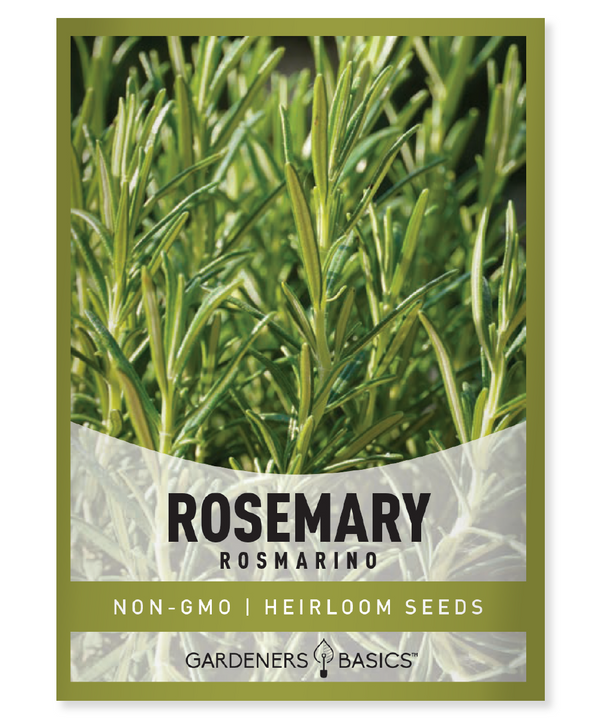As a passionate gardener and a lover of all things herbs, I often get asked questions about the various plants I grow in my garden. One of the most frequent inquiries is about the size of rosemary bushes. In this article, I will provide you with an in-depth guide on how big do rosemary bushes get and how to manage their growth. This step-by-step guide is perfect for anyone growing rosemary in their garden.
Introduction to Rosemary
Rosemary is an evergreen shrub and a prevalent herb in many culinary dishes. Its needle-like leaves and aromatic scent add a unique flavor to various recipes. Rosemary is an easy-to-grow herb that thrives in full sun and well-drained soil. It is commonly used in herb gardens and can be grown from herb seeds or propagated from cuttings.
There are several types of rosemary with varying growth habits, making it essential to choose a suitable variety for your planting site. To keep your rosemary plants healthy, it is also crucial to be aware of common pests and diseases, such as spider mites and powdery mildew.
Types of Rosemary
When choosing rosemary seeds for planting, it is essential to consider the different types of rosemary available. Some varieties have unique growth habits that may affect the size of the bushes:
- Upright Rosemary: These varieties grow vertically, reaching heights 4-6 feet tall. Examples include 'Tuscan Blue,' 'Arp,' and 'Blue Spires.'
- Trailing or Creeping Rosemary: These rosemary varieties grow horizontally, forming a ground cover rather than growing tall. Examples include 'Prostratus,' 'Irene,' and 'Huntington Carpet.'
- Compact Rosemary: These varieties are ideal for small spaces or containers, as they have a more compact growth habit, typically reaching around 1-2 feet tall. Examples include 'Blue Boy,' 'Golden Rain,' and 'Roman Beauty.'
Rosemary Seeds

$2.49
Rosemary Seeds - Heirloom, Non-GMO, Non-Hybrid, Open-Pollinated Grow your own fragrant rosemary herb garden with our premium rosemary seeds, perfect for culinary use, container gardening, and adding beauty to your yard. These heirloom, non-GMO, non-hybrid, open-pollinated seeds ensure you’re cultivating… read more
How Big Do Rosemary Bushes Get?
Rosemary typically grows as an evergreen shrub that can reach 2-6 feet tall and 2-4 feet wide, depending on the variety. Some varieties are more compact, while others have a more sprawling growth habit. By understanding the specific growth habits of your chosen type, you can determine how big your rosemary bushes will get and plan your herb garden accordingly.
Planting Site and Growing Conditions
To ensure your rosemary grows to its full potential, it is crucial to provide optimal growing conditions:
- Full sun: Rosemary requires at least 6-8 hours of bright light daily.
- Well-drained soil: Rosemary prefers a slightly acidic to neutral soil pH (6.0-7.0) with good drainage. Avoid waterlogged or heavy clay soils, which can lead to root rot.
- Air circulation: Proper air circulation prevents diseases like powdery mildew. Space plants at least 2-3 feet apart to ensure adequate airflow.
- Cold weather protection: Although rosemary is an evergreen shrub, it may require protection from harsh cold weather, especially in colder climates. Mulching and moving container plants indoors during winter can help protect your rosemary.
Pruning and Managing Growth
To maintain your rosemary bushes at a manageable size and promote healthy growth, regular pruning is essential:
- Timing: The best time to prune rosemary is early spring or after the growing season. Avoid heavy pruning during winter, as this can stress the plant.
- Technique: Prune your rosemary by removing dead, damaged, or diseased branches. Focus on shaping the plant to maintain its desired size and form, cutting back up to one-third of its overall growth. Be cautious not to over-prune, as this can stunt the plant's growth.
- Harvesting: Regular harvesting of fresh rosemary for culinary use can help keep your bushes compact and encourage new growth. Be sure to remove no more than one-third of the plant at a time to prevent stressing the plant.
Companion Planting
Rosemary is known to be a beneficial companion plant in the garden. By planting rosemary alongside certain other plants, you can improve the overall health and productivity of your garden:
- Beans and peas: Rosemary can help deter bean beetles and other pests that commonly attack legumes.
- Cabbage family: Rosemary can help repel cabbage moths and other pests that may damage these plants.
- Sage, thyme, and other Mediterranean herbs share similar growing conditions and can thrive together in a well-drained, sunny herb garden.
It is important to avoid planting rosemary near potatoes, as they may inhibit each other's growth.
 Common Pests and Diseases
Common Pests and Diseases
Maintaining healthy rosemary bushes requires monitoring for common pests and diseases. Some issues to watch for include the following:
- Spider mites: These tiny pests can cause significant damage to rosemary plants by sucking plant juices, leading to yellowing and curling of the leaves. Regularly inspect your plants and treat them with insecticidal soap or neem oil if necessary.
- Powdery mildew: This fungal disease appears as a white, powdery coating on the leaves and stems of rosemary plants. Improve air circulation and avoid overhead watering to prevent powdery mildew. If needed, treat with a fungicide.
- Root rot can occur if your rosemary is planted in poorly drained soil or overwatered. Ensure proper drainage and avoid over-watering to prevent root rot.
Conclusion
Growing rosemary in your herb seeds garden is a rewarding experience, as it is an easy-to-grow and versatile herb. Understanding the growth habits of different types of rosemary, providing optimal growing conditions, and regularly pruning and managing the plants will help you maintain healthy, productive rosemary bushes that can reach their full potential. Keep an eye out for pests and diseases, and enjoy the fresh rosemary you've grown in your very own garden!
Visit www.gardenersbasics.com for more gardening tips and advice. Happy gardening!





 Common Pests and Diseases
Common Pests and Diseases

